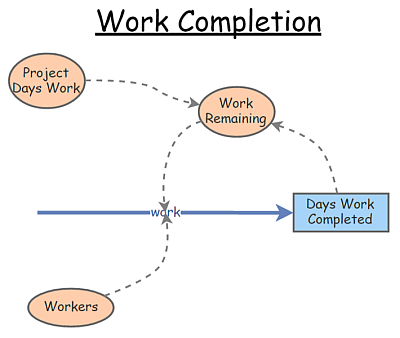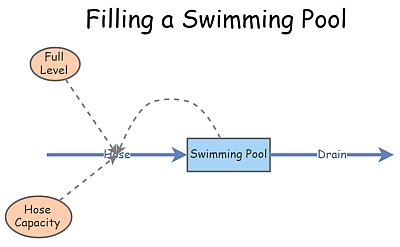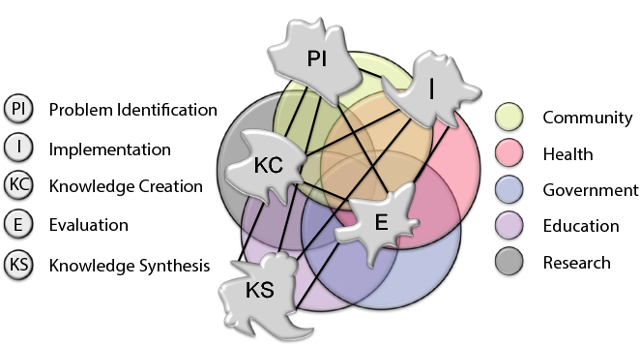
Developing understanding: Models 3-4 [Systems thinking & modelling series]
This is part 10 of a series of articles featuring the book Beyond Connecting the Dots, Modeling for Meaningful Results.
Work Completion
In the “Work Completion Model” a number of workers are working on a project. You want to know how long it will take them to finish.
In this model Workers is not a factor, but a limit on the amount of work that can be performed in a time period.
Need help? See the Model instructions
Note that in this model you might have considered the Workers as a stock, as they are actually a collection. They’re not, because the number remains constant in the context of this particular model. In a different model Workers might actually be a stock with an inflow and an outflow.
| Exercise 2-3 |
|---|
| Set up the above model to run with Time Step of 0.25. Compare the results of this run with the results of the previous run above. By making the time step smaller have we improved the accuracy of result? Why? |
The appropriate Time Step is one that captures the activity occurring within the model. In this model the Workers are in integers and Project Work is in days. Since these are both integers, and the Time Units are measured in days, it might seem the appropriate Time Step is 1. As it turns out, the appropriate Time Step is 0.5. If the model included events that took place on the order of hours, you would have to decide whether to alter the model to run in hours or reduce the Time Step. You would have to make one of these changes to ensure that no interactions in the model were missed.
Filling a Swimming Pool
Let us now venture into the realm of “Filling a Swimming Pool” for a sizable swimming pool with water using a garden hose.
The following model investigates filling a swimming pool as a stock.
Need help? See the Model instructions
This model again demonstrates that building a model is an iterative process where you build a little and test. And when things don’t go the way you expect them to go it’s an opportunity for learning.
It’s also important to note that it’s best not to bury variables inside other variables. Making them explicit in the diagram, as was done with Hose Capacity, makes it easier for others to see the relevant influences.
Next edition: Developing understanding: Models 5-6.
Article sources: Beyond Connecting the Dots, Insight Maker. Reproduced by permission.
Header image source: Beyond Connecting the Dots.






